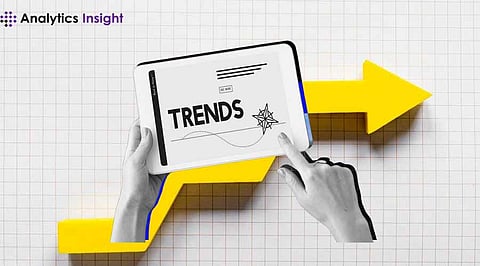

As we approach 2025, The landscape of data science continues to evolve rapidly. New technologies and methodologies are emerging, impacting how organizations manage and analyze data. Understanding the data science trends in 2025 is crucial for businesses and data scientists alike.
Know the key trends expected to shape the future of data science, from generative AI growth to increased consumer data protection.
Adversarial machine learning poses significant challenges for AI models. By 2025, AI developers will focus on creating robust systems to combat the threats. This trend highlights the need for enhanced security measures in AI applications.
Data scientists will play a crucial role in developing techniques to identify and mitigate adversarial attacks. The growing complexity of AI systems will require constant vigilance and innovation to ensure their reliability and effectiveness.
The demand for data analysts is rising as organizations recognize the importance of data-driven decision-making. By 2025, companies will hire more data analysts to support their growing data needs. This trend emphasizes the importance of turning data into actionable insights.
Companies require skilled professionals who can analyze data and communicate findings effectively. This shift aligns with the overarching data science trends, focusing on leveraging data to drive business strategy and growth.
Kaggle has become a popular platform for data scientists to collaborate and compete. As the community continues to grow, more data professionals are joining Kaggle in 2025. This trend reflects the increasing importance of collaboration in the data science community.
Participants can learn from each other, share knowledge, and solve complex challenges together. By engaging in Kaggle competitions, data scientists can enhance their skills and gain recognition within the industry.
Deepfake technology has raised both excitement and concern. As it becomes more accessible, the potential for misuse grows. In 2025, deepfake videos and audio will be more prevalent, driven by advances in AI and machine learning.
This trend will challenge data scientists to develop robust detection methods. As the demand for high-quality content increases, so does the responsibility of ensuring ethical use. Addressing the implications of deepfakes will be crucial for businesses and consumers alike.
Generative AI has taken center stage in recent years. Its applications span across various industries, including content creation, product design, and art generation. By 2025, we can expect generative AI to become more sophisticated and widely adopted.
This trend aligns with the data science trends in 2025 as businesses seek innovative ways to enhance customer experiences. Organizations will utilize generative AI to create personalized marketing materials, tailored product recommendations, and dynamic content for users.
Organizations increasingly seek comprehensive AI solutions that address their specific needs. In 2025, there will be a notable rise in the demand for end-to-end AI solutions. These solutions cover everything from data collection to model deployment and monitoring.
As businesses strive for efficiency and better results, this trend will dominate the data science trends in 2025. Data scientists will play a critical role in developing these solutions, ensuring they meet industry requirements and compliance standards.
With growing concerns about data privacy, consumer data protection will be a key focus in 2025. As data breaches and misuse continue to make headlines, organizations will prioritize safeguarding consumer information.
This data science trend will necessitate robust data governance policies and practices. Data scientists will need to implement measures that protect sensitive data while still delivering valuable insights. Organizations must demonstrate their commitment to data privacy to build trust with consumers.
Python will be a choice for a data scientist. By 2025, we will see a rise in the applications developed in Python.
This will finally position Python solidly on the top trends in data science by 2025. With vast libraries and frameworks, Python will remain the tool that empowers a data scientist to build efficient and scalable solutions in numerous fields.
The data science trends in 2025 indicate that this is going to be the year when the industry will change. From the growth of generative AI to the rising demand for consumer data protection, the trends are going to shape the way organizations look at data analytics.
Understanding the top trends in data science helps businesses change pace and shift gears accordingly. This will help them strategically drive the growth of their businesses. The future of data science is promising and full of opportunities as data scientists continue to innovate and collaborate.
